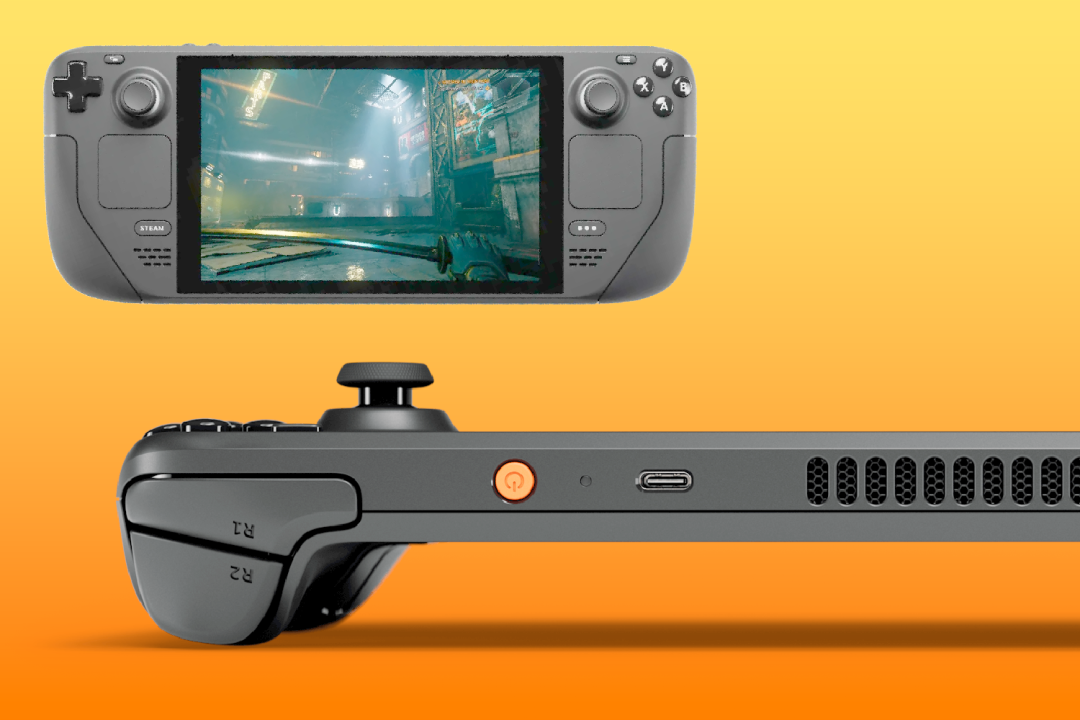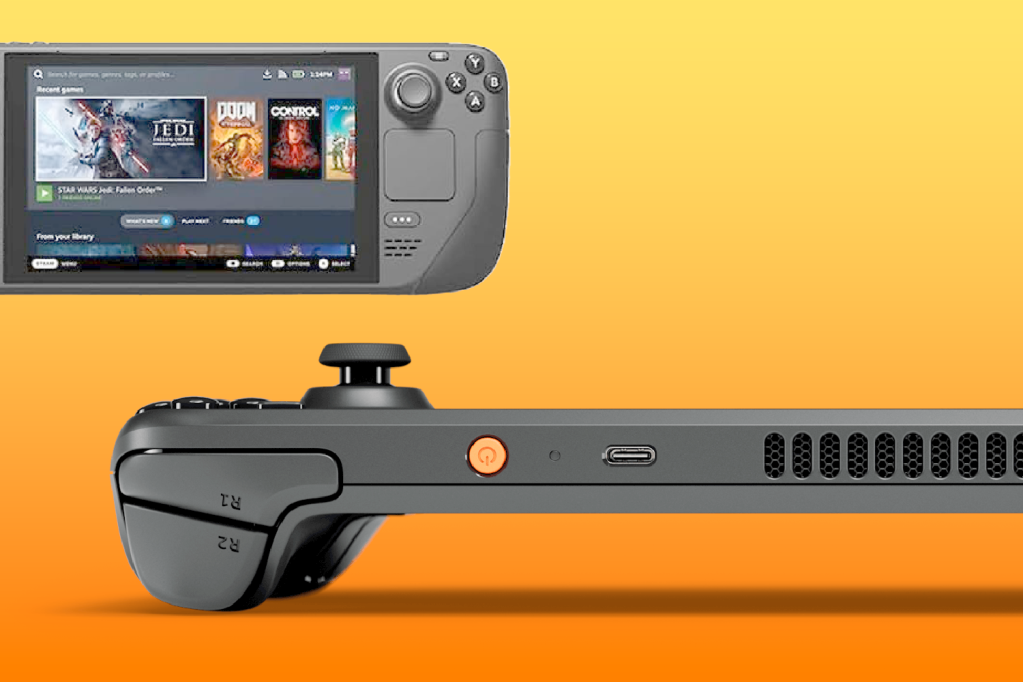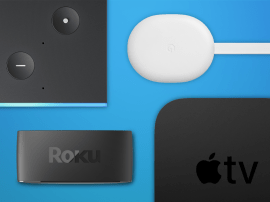Steam Deck OLED vs Steam Deck: the two Decks compared
We have a new handheld console

We have a new handheld console. The Steam Deck OLED.
While we were sat here waiting for the PlayStation Portal to drop, Valve gave us a surprise release with the Steam Deck OLED. Following in the footsteps of Nintendo, Valve has turned to OLED tech to up your handheld gaming experience.
But does this mean your first-gen Steam Deck is now redundant? Not quite, but there are some pretty big differences between the two.
Design: light on its feet

The Steam Deck OLED holds a bigger fan and updated thermals. This means the Steam Deck OLED should run cooler than the LCD version, which is a major bonus. The LCD Steam Deck could easily get quite warm. It was also very noisy, but we can’t tell yet if this has changed in the upgraded version.
The Steam Deck OLED has also been trimmed down. It’s now 30g, or around 5% lighter than the LCD model. This is down to the OLED screen, says Steam. At 639g, or 669g for the Switch Deck LCD, that’s still a lot heavier than the 420g Nintendo Switch OLED. The weight wasn’t a major problem for us when we reviewed the original Steam Deck, but that’s largely down to us resting it on a pillow or a book. Hand fatigue is definitely real if you’re spending a few hours battling through Elden Ring on a long train journey, though.
OLED Screen & battery: improvements all round

Both the 512GB and 1TB Steam Deck OLED models come with a 7.4in 1280×800 HDR OLED display. However, the anti-glare etched glass display only comes with the 1TB option. This, in theory, should produce brighter colours, deeper dark tones, and crisper images all round.
The base Steam Deck also has a native resolution of 1280×800, but without all the fancy HDR OLED stuff. Between the two models, the OLED should be the way to go, but we’ll have to wait until we get our hands on one to truly put it to the test.
One of our major gripes with the Steam Deck was its battery life. All too quickly after starting a game, it seemed like the Steam Deck was already on its last legs. We can now rejoice however, as the Steam Deck OLED is reported to have 30-50% more battery life as the OLED display draws less power. This has been combined with an updated, more efficient AMD APU.
When it comes to battery power, there’s no competition here. The original Steam Deck is woeful on battery. In our original review, we were consistently squeezing around 2-4 hours from it, so if this is your deciding factor then go with OLED.
Controls, features & connectivity: speedy

We wanted better haptic feedback and touchscreen response, we got it. Steam says the touchscreen’s responsiveness and fidelity has been vastly improved in the Steam Deck OLED. The haptics have also been tweaked to offer higher fidelity and more consistent controls. This is good news, as the haptic controllers of the original weren’t exactly great, and definitely didn’t stand up to the PS5 DualSense. Any improvement is a good one, in our book.
Steam Deck OLED comes with Wifi 6E. This offers increased bandwidth for downloads, as well as lower latency for online play. Steam estimates that this translates to around three times faster downloads, but we’ll test that out once we get our hands on one.
The original Steam Deck still runs on Wi-Fi 5. Surprising nobody, but Wi-Fi 5 is slower than Wifi 6E, but how big an issue this plays in your decision is up to you.
Initial verdict
On first impressions, the Steam Deck OLED seems to be superior in every way. What’s not to love about an OLED screen in a lighter console, faster connectivity and an upgraded battery? It seems like they’ve pretty much smoothed out the major gripes we had with the original handheld.
This makes price the major deciding factor between the two. The Steam Deck LCD currently starts at $399/£349, compared to the Steam Deck OLED’s $549/£479. Until we can give the Steam Deck OLED a dedicated review, we won’t say for certain that the extra bang is worth the buck. However, it just might be…


